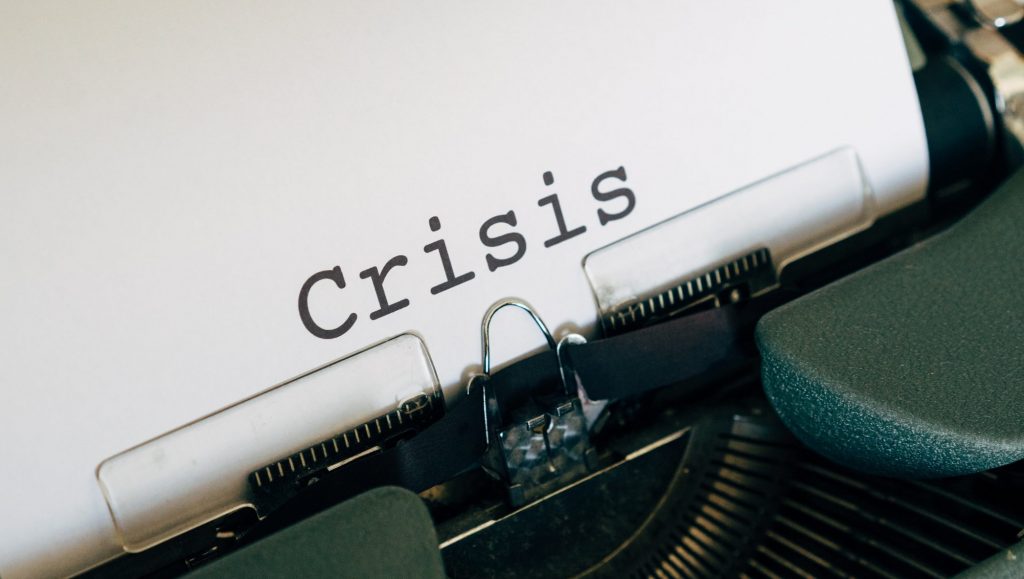The increasing number and complexity of environmental and technological challenges, coupled with strained natural resources, require innovative actions. “Intellectual property-based industries are significant drivers of GDP and employment rates in both developed and developing economies,” wrote Satya Srija, a law student at Bennett University in India’s Legal Service e-Journal. They are an “essential and rising element of every contemporary economy.”
A legal framework to protect new ideas is vital to fostering them and help guarantee sustainable economic growth and improved quality of life. “Intellectual property rights [IPR] … propel society by encouraging innovation and therefore reflect its progress,” Ed White of IP and Innovation Research wrote in an April op-ed on Clarivate, a platform promoting innovation.
In Egypt, the government has made promoting innovation, research and development a priority. In December 2014, it launched the national umbrella initiative “Creating an Egyptian Society that Learns, Thinks and Innovates.” In 2015, the state-owned Academy of Scientific Research & Technology launched several programs to identify genius children. The Ministry of Higher Education and Scientific Research in 2017 announced the National Strategy for Science, Technology and Innovation 2030. In 2018, the state created the Egyptian Space Agency and in 2019 launched the country’s first artificial intelligence (AI) incubator, as well as a fund to support innovators.

Currently, whatever innovations that come out of those programs and initiatives are protected by an intellectual property law last modified in 2002. On several occasions this year, however, the prime minister has said the government is looking to update it.
It could take lessons from the U.S. law, which ranked in the top 10 on the International Property Rights Index (IPRI) in 2021. The United States also had the most international patent applications from 1990 to 2018, according to the World Intellectual Property Organization. “IP-intensive industries — such as computer technology, entertainment, apparel and pharmaceuticals — represent 41% of the U.S. economy,” a Congressional Research Service (CRS) paper noted in April.
Egypt’s IP laws
Parliament approved Egypt’s primary IPR law in 2002 to “bring Egypt [in] line with its obligations under the [World Trade Organization’s] Trade-Related Aspects of Intellectual Property Rights (TRIPS) Agreement,” according to the General Authority for Investment (GAFI).
That law modified some entries in the 1954 umbrella to “create an environment that will encourage creativity and boost much-needed direct investment,” noted GAFI.
Those updates affect copyrights, trademarks, patents, and “new plant varieties” protection, which protects the rights of those who breed new types of plants. However, each category continues to follow its own laws, with the 2002 law superseding any conflicting entries.
Patents for industrial designs follow a 1949 law, which defines them and gives inventors (whose innovation is on paper or in the prototype phase) protection for 20 years from the application date. Once an idea or prototype becomes mass-produced, it gets five years of protection, which can be renewed twice. Those seeking that protection must apply to a different office and have their innovations registered on a different registry than other IP filings.
Trademarks, granted to words and/or images that identify a specific brand, follow a 1939 law, which gives 10 years of protection in accordance with the Trademark Law Treaty published by the World Intellectual Property Organization. Holders could renew their trademark “indefinitely,” said GAFI. “The procedure for renewals is the same as the procedure for the initial registration.”
A 1992 law classifies copyrights as protection for “architectural designs; speeches; theatrical, photographic, musical and cinematographic works; and television [videotapes, computer software] and radio programs,” said GAFI. The 2002 law deals exclusively with copyright infringement, giving books and computer software protection for the author’s lifetime, plus 50 to 70 years after death. Sound recordings get 50 years of protection.
A vital missing piece in Egypt’s IPR system is protection of antiquities and historical symbols. In 2007, BBC News reported Egypt was considering a law that would require annual royalty payments from establishments that use unauthorized replicas of Egypt’ antiquities and historical symbols. That would have been a “blow to themed resorts across the world where large-scale copies of Egyptian artifacts are a crowd-puller,” said the BBC article. However, nothing has transpired since.

Ineffective regulations
The International Intellectual Property Alliance (IIPA), a U.S. lobby group, criticized Egypt’s 2002 law in its 2009 Special 301 Report: the “law and implementing decree, while suitable to enforce against … piracy in general, left unresolved … TRIPS deficiencies, other ambiguities in protection and important gaps for protection recommended by IIPA.”
The IIPA also criticized the 2002 law for not giving foreign-language literary works protection unless they are translated to Arabic within three years of being sold in Egypt.
In 2021, the Egyptian Research Forum published a paper noting that local IPR protection is “essential to digital transformation” and that the 2002 law requires “comprehensive” updates. It pointed to “significant gaps in matters such as copyright piracy and digital rights management.”
Those factors contributed to Egypt dropping one spot to 64th of 129 countries in the 2021 International Property Rights Index. In the MENA region, Egypt retained its rank of 10th out of 15 countries. The country’s overall score in the IPR sub-index, which rates the perception of IPR protection and the reality, decreased.
Egypt also had declining scores in several other sub-indices, including Legal and Political, Judicial Independence, Rule of Law, Political Stability and Control of Corruption.
Recognizing Egypt’s poor performance regionally and internationally, the government has been working on an update for local IPR laws since September 2020. Parliament received the first draft in December 2021.
It features modifications to the technical and administrative terms and conditions for registering innovations and how to include updates on already patented work. It explicitly excludes innovations that could impact national security and public order, threaten the lives of humans or animals, and “significantly” harm the environment. Also, leaked details indicate that IPR protection will last for 20 years, regardless of its category.
The draft law also adds new conditions for terminating patents, such as nonpayment of annual fees to keep the IR or penalties (7% of the fee, annually) for late payments. A patent that remains unused two years after registration also could be terminated, but only if a third party that wants to use the patent commercially complains an IP owner is “unreasonably” rejecting the request.

Looking to America
The United States has the world’s biggest economy, a significant portion of which relies on patented materials. The U.S. Patent and Trademark Office (USPTO) calculated that IP-intensive sectors accounted for 47 million jobs in America (out of 161.2 million total, according to Statistica) and contributed $7.8 trillion to the $23 trillion national economy in 2021. “IP law, given its economic and cultural significance, is more important than ever,” noted the April CRS paper.
U.S. IPR regulations are federal law covering patents, copyrights, trademarks and trade secrets. “These legal protections are each distinct,” said the CRS paper. “Each form of IP protects a different type of intellectual creation, has a different procedure for obtaining rights, and grants IP owner rights that vary in scope and duration.”
Patent applications are more demanding than other IP submissions. They require the patent examiner to determine whether it is “truly novel, useful and nonobvious.” The innovation in question must also be “patentable subject matter and adequately described in the patent application.”
According to the CRS, that process could take “several years” before a patent examiner accepts or rejects an application. If approved, the patent duration is 20 years from filing. However, that may increase for specific reasons, “such as delays in patent prosecution,” noted the CRS document.
Copyrights are more straightforward to secure. “The copyright holder doesn’t need to apply with the government to obtain the copyright,” said the CRS paper. Instead, they go to the U.S. Copyright Office to secure the IPR. However, protection is not absolute, as it doesn’t guard against “fair use,” whose definition and provisions vary. “Fair use is governed by a four-factor test that comprises “purpose and character of the use, the nature of the original work … what was copied, and any market harm from the use.”
Additionally, “transformative” use doesn’t infringe on copyrights. This entails adding a “new expression, … a different purpose, and/or alters the original work with [another] expression or meaning,” said the CRS document. Copyright uses in libraries, classroom education and religious purposes are exempt from limitations.
The USPTO registers trademarks based solely on the text and design’s distinctive nature and availability. Descriptions shouldn’t be generic or deceptive.
Lastly, U.S. IPR laws protect “trade secrets” from going public. The CRS defines “secrets” as “any form of business, scientific or technical information that has value from not being generally known or ascertainable to another person.” That includes secret recipes, formulas, financial information, source code and manufacturing processes..
However, the protection is limited to acquiring the trade secret through “improper means,” including theft, bribery, hacking or violating a nondisclosure agreement.
A necessity
The lack of an effective IPR law can negatively impact trade, as many countries want to ensure their patented products aren’t competing against significantly less expensive counterfeits. A case in point is America’s adversarial position against China, because China’s IPR regulations allow for the production, sale and export of counterfeits, as well as forced technology transfer to local companies.
The United States includes IPR protection requirements in its Generalized System of Preferences, a duty-free agreement signed with emerging markets. Egypt is currently part of that program, but its participation could be threatened if the Trade Promotion Authority (TPA) issues more stringent IPR requirements in the next round of renewals.
“Since 1988, Congress has included IPR protection as a principal negotiating objective,” according to a February CRS paper. “Congress may use potential TPA renewal to reaffirm or modify U.S. trade negotiating objectives on IPR. U.S. trade policy generally has promoted the expansion of IPR.”
An effective IPR protection framework also helps promote SMEs that need regulations to safeguard their innovative solutions. A European Union Intellectual Property Office study published in March estimated that SMEs that own IPR generate “68% higher revenue per employee than those who don’t own any IP rights,” said Maria del Coro, the study’s author. The document singled out copyrights, patents and trademarks as “most important for brands to consider.”
The push toward eco-friendly solutions is driving the need for more effective IPR protection, noted White of IP and Innovation Research. “Funding the solution to these challenges, funding the pay of scientists and engineers, alongside committed regulatory change, is an essential part of how we will transition,” he said. “Patents enable and lubricate this development. They can be traded, they can be used as security for finance, they can define technology in a contract.”







